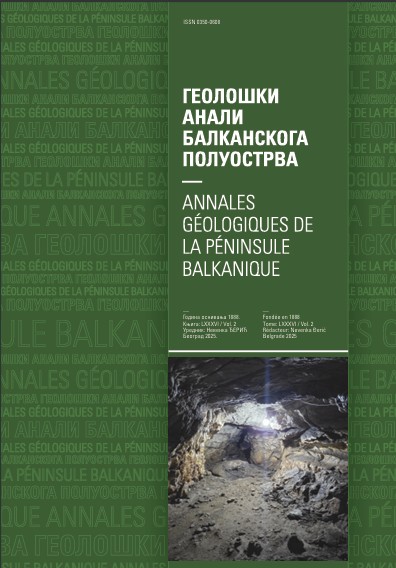From shallow-water carbonate ramp to hemipelagic deep-marine carbonate deposition: Part 3. Lithostratigraphy and Formations of the Middle to Late Anisian Bulog sedimentary successions (Bulog Group) in the Dinarides (Bosnia&Herzegovina, Serbia, Montenegro)
Abstract
In the Middle Anisian the opening of the Neo‐Tethys started and this is characterized by a significant change in deposition in the whole Western Tethys Realm. In the Dinarides the Middle to Late Anisian tectonostratigraphic and basin evolution is mirrored by their sedimentary successions. In the Middle Anisian, the evolution of the shallow‐water Ravni Carbonate Ramp ended relatively abrupt in the late Pelsonian: a rapid decrease of carbonate production is accompanied by formation of a horst‐and‐graben topography. This change is expressed by the change in deposition from shallow‐water carbonates to deep‐ water sedimentary rocks, i.e. the Ravni Carbonate Ramp experienced a drowning. Contemporaneously neptunian dikes were formed in the underlying Ravni Formation, filled with deep‐water limestones. In the grabens, near to the newly formed escarpments mass transport deposits accumulated. During the time span late Pelsonian to middle Illyrian a general deepening trend is mirrored in the sedimentological trend and the microfacies characteristics. Fossilla ‐ gerstätten (mainly cephalopods) and hardgrounds occur widespread in the deeper‐water red nodular limestones formed widespread above the Ravni Carbonate Ramp. Around the middle/late Illyrian boundary a second intense pulse of tectonic motions, related to the onset of volcanic activity, resulted in a crosscut of the older horst‐and‐graben topo graphy. A second generation of neptunian dikes was formed, the blocks tilted, and again mass transport deposits accumulated near to escarpments. The late Illyrian is characterized by an overall deepening trend expressed also in a change in the microfacies characteristics to radiolarian‐rich wacke‐ to packstones. In cases even radio larites or silicified limestones are characteristic sedimentary rocks in late Illyrian to Ladinian times beside silicified volcano‐sedimentary rocks. This paper will define the late Middle‐Late Anisian red nodular limestones and related sedimentary rocks with mass transport deposits overlying the Ravni Carbonate Ramp on base of new sedimen tological, stratigraphic and micro facies data following the international rules and standards. The palaeo geographic position together with characteristic litho‐ and microfacies features cause the lithostratigraphic definition of thedifferent units. Included in the newly introduced Bulog Group are: 1) the emended and formalized Bulog Formation and 2) the newly introduced and defined Komarani Formation. The type‐section of the Bulog Formation east of Sarajevo (Han Vidović, central Bosnia and Herzegovina) is revisited. The Komarani Formation is introduced with the type‐section in Komarani village (Zlatar Mt. in SW Serbia). The reference sections for the Bulog Formation in SW Serbia (Klisura quarry on Zlatibor Mt.), Bosnia and Herzegovina (Pridvorica locality at Romanija Mt.) and in Montenegro (Boljevići near Virpazar), are defined. In the reference sections some characteristic lithological and microfacies features are better preserved as in the type‐section and included in the emendation and formalization of the Bulog Formation. The Bulog Formation at the type‐section and all reference sections are in the Late Triassic overlain by the shallow‐water carbonates of the Wetterstein and Dachstein Carbonate Platforms. Age and facies equivalent red nodular limestones deposited in the outer shelf region are part of the Middle to Late Triassic Hallstatt Limestone succession. In the type‐region of the Hallstatt Limestones these late Middle to Late Anisian red nodular limestones are named Schreyeralm Limestones. The name Schreyeralm Limestone was introduced earlier as the name Bulog Limestone. It is discussed if also in the Dinarides the name Schreyeralm Limestone should be used for such Anisian red nodular limestones deposited in the outer shelf region, for priority reasons, or if they should be included into the Bulog Formation to avoid confusion, for historical reasons.
Copyright (c) 2023 Geološki anali Balkanskoga poluostrva

This work is licensed under a Creative Commons Attribution 4.0 International License.










